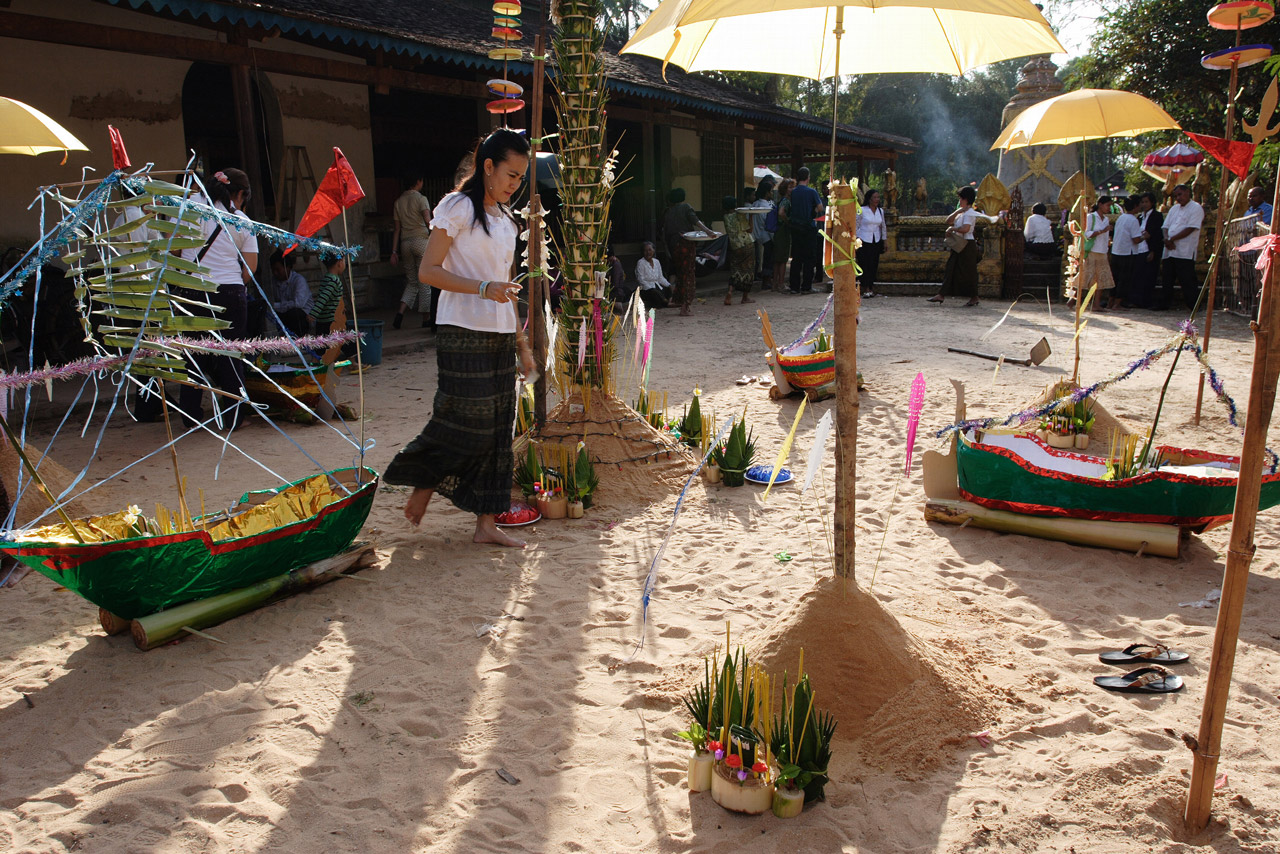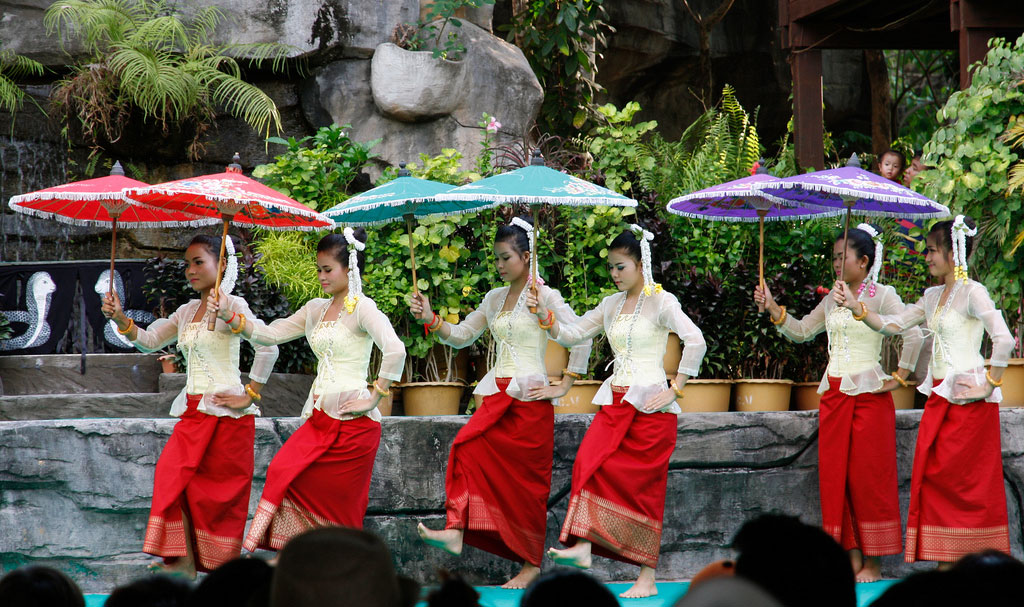Chaul Chnam Thmey: Happy New Year in Cambodia
In many places around the world, December is a month filled with holiday celebration. In Cambodia, a predominantly Buddhist nation, the New Year is celebrated in April (right in the middle of the hot season) and is the most important spiritual and social event of the year.

On the first day of the festivities, every home sets up an altar to welcome the spirit of the New Year. A statue of the Buddha is placed on the altar, along with flowers, candles, incense, a bowl of scented water, food and drink, and banana leaves shaped into different figures. Houses are cleaned; the first days are especially auspicious for the rest of the year, and a clean environment and conscience are very important.
People visit their local temples (known as wats) and offer food to the monks. Special sand mounds are built on the grounds of many wats, and these conical, smooth mounds are decorated with religious flags and donations. Each grain of sand gains merit for the builder, who will experience happiness and good health in the coming year. The atmosphere around the pagodas is exuberant and spiritual, but also relaxed, with stalls offering food and drinks nearby.
Inside the prayer halls, lay monks and nuns—all in white, with their heads freshly shaved—pray, drink tea, and listen to the music of small orchestras that play all day. Gongs, drums, and flutes soar above the murmur of the crowd. In the afternoon, the faithful follow a drummer clockwise around the prayer hall to welcome the new year. At each turn, a multi-colored flag on a long pole is raised, full of donations, to ward off bad sprits.
Newsletter Signup
By clicking ‘Sign Up,’ I acknowledge that I have read and agree to Hachette Book Group’s Privacy Policy and Terms of Use
On the second day of the celebrations, Cambodians will visit their temples again, make merit, and talk to the monks. The temples have been decked out in garlands, and shrines have been erected near the sand mounds. The mounds are blessed in a ceremony conducted by an old lay monk. Children throw talcum powder at each other and anyone they can get close to. Water bombs are popular as well, but the water throwing in Cambodia does not match the fever pitch it attains in neighboring Thailand.
Many Cambodians head for Angkor Wat, the spiritual heart of the nation. A thousand years ago, Angkor had a million inhabitants. The sprawling temple complex that formed the center of a vast empire stretching across the South East Asian mainland from Thailand to Laos, Vietnam, and southern China has since become a world tourist attraction, pulling in package tours and independent travelers alike.
Cambodians arrive on bikes, on motorbikes, in pickup trucks, and on so-called “mechanical oxen,” platforms on wheels powered by diesel engines, which are loaded with scores of people. The mechanical oxen slowly cruise between the temples, passing one another, as passengers throw talcum and water, erupting in laughter every time a reveler scores a good hit. For many Cambodians, especially those from remote provinces, the New Year break provides a rare chance to visit Angkor Wat and see their own magnificent history firsthand.

On day three, people gather in the pagodas for the festivities’ culmination, the washing of the Buddhas. Inside the prayer halls, monks line up in front of the Buddha figures. The crowds outside try to squeeze in after the monks, and the buildings quickly fill with thick wafts of incense. Buckets of water are brought in and blessed, monks read from sacred texts, and flower petals are thrown onto the water. The tension in the room is palpable; an air of expectation hovers over the proceedings. Children in the front rows fidget impatiently but stay quiet.
Quite suddenly, the monks rise as one. The dense throng parts and the monks file out quickly, to their cells, to safety.
Seconds later, the prayer hall explodes in a frenzy of action. Everyone grabs for buckets and pails, and the Buddha figures are doused with water. Water flies everywhere and soon inundates floors, walls, icons, and participants. Children climb up onto the podiums that the sacred figures stand on and pour entire buckets over the sacred icons, onto themselves, onto each other. Within seconds, a water fight envelops the entire building.
For the Khmer people, this is Chaul Chnam Thmey, or “Enter the New Year,” and the ceremony serves as a celebration as well as a way of welcoming the rains, for the monsoon is about to break and the country is parched. This final chaotic ritual is a great outpouring of energy, happiness, and hope for the coming months.

Newsletter Signup
By clicking ‘Sign Up,’ I acknowledge that I have read and agree to Hachette Book Group’s Privacy Policy and Terms of Use
Pin it for Later


